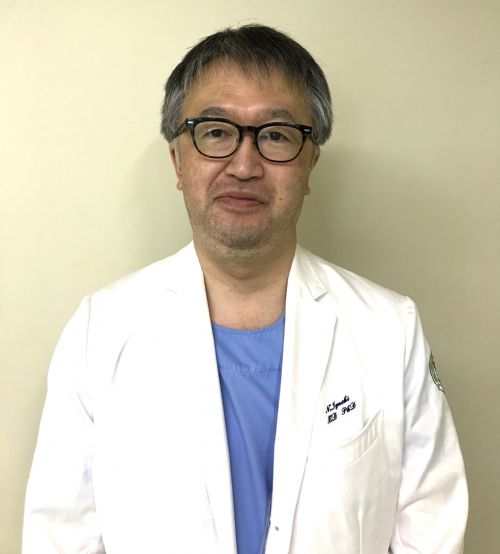Time slot's time in Taipei (GMT+8)
- 2023/10/14
- Room 301
- Type: Physical(Eng)
- Keynote speak-2nd Joint Scientific Congress of JSICM/TSCCM/TSECCM (JKT)
Keynote speak
- TIME
- TOPIC
- SPEAKER
- MODERATOR
- 09:50-10:10
- Urinary Oxygen Tension Continuous Monitoring in The OR and ICU- Promising New Parameter that Solve Problems with the Current Management of the Kidney-
- SPEAKER:
井口直也(Naoya Iguchi)
Japan (日本)
- MODERATOR:
土井 研人(Kent Doi)
Japan (日本)
- Dr. 井口直也(Naoya Iguchi)
- Associate Professor
- Department of Anesthesiology & Intensive Care Medicine, Graduate School of Medicine, Osaka University
Biography:
Dr Naoya Iguchi, PhD
Naoya Iguchi, MD, PhD is a specialist in intensive care medicine and anaesthesiology at Osaka University Hospital in Japan. His research focuses on the early diagnosis and prevention of acute kidney injury in perioperative and critically ill patients.
Dr. Iguchi is particularly interested in developing clinically available renal oxygenation monitoring and changing clinical management of kidney at risk. His goal is to understand changes of the renal oxygenation that occur in real world using this monitoring technique and, armed with this knowledge, to aim better choice of treatment, develop new therapies and improve patient’s outcome.
Dr Naoya Iguchi, PhD
Naoya Iguchi, MD, PhD is a specialist in intensive care medicine and anaesthesiology at Osaka University Hospital in Japan. His research focuses on the early diagnosis and prevention of acute kidney injury in perioperative and critically ill patients.
Dr. Iguchi is particularly interested in developing clinically available renal oxygenation monitoring and changing clinical management of kidney at risk. His goal is to understand changes of the renal oxygenation that occur in real world using this monitoring technique and, armed with this knowledge, to aim better choice of treatment, develop new therapies and improve patient’s outcome.
Abstract:
Urinary oxygen tension continuous monitoring in the OR and ICU
- Promising new parameter that solve problems with the current management of the kidney-
Acute kidney injury (AKI) is a common complication of major surgery and critically ill patients in intensive care unit (ICU). AKI is associated with an increased short-term risk of in-hospital morbidity and mortality and carries a long-term risk of chronic kidney disease. Delayed diagnosis of AKI with existing markers such as serum creatinine and plasma and urinary biomarkers leads to worse outcomes. Major problem of these markers is looking at the results of cell death. Another problem of them is intermittent indicators and requiring some time to sample and measure. Therefore, the real-time parameter to detect renal medullary hypoxia before cell death is crucial.
There is emerging experimental and clinical evidence that renal medullary hypoxia which contribute to the development of AKI. Furthermore, medullary tissue hypoxia precedes the development of AKI, much before raise of serum creatinine. It is not feasible to measure renal medullary tissue oxygen tension in clinical setting. However, it is possible to measure bladder urine oxygen tension continuously which have reported a good correlation with renal medullary oxygenation. Our research group has been collecting both experimental and clinical data on urinary oxygen tension and has a lot of experience in this.
By using this technique, not only AKI can be predicted very early but clinicians can also grasp at the bedside the effects of various drugs and maneuvers on renal perfusion and oxygenation. This monitoring method may also contribute to the better selection of treatments and the development of new ones including personalized medicine. For example, it will tell us how to properly intervene and when to deal with the low blood pressure that is happening to the patient in front of us.
In this presentation, I would like to show congress attendees real-world clinical data of continuous urinary oxygen tension and discuss it with you.
Urinary oxygen tension continuous monitoring in the OR and ICU
- Promising new parameter that solve problems with the current management of the kidney-
Acute kidney injury (AKI) is a common complication of major surgery and critically ill patients in intensive care unit (ICU). AKI is associated with an increased short-term risk of in-hospital morbidity and mortality and carries a long-term risk of chronic kidney disease. Delayed diagnosis of AKI with existing markers such as serum creatinine and plasma and urinary biomarkers leads to worse outcomes. Major problem of these markers is looking at the results of cell death. Another problem of them is intermittent indicators and requiring some time to sample and measure. Therefore, the real-time parameter to detect renal medullary hypoxia before cell death is crucial.
There is emerging experimental and clinical evidence that renal medullary hypoxia which contribute to the development of AKI. Furthermore, medullary tissue hypoxia precedes the development of AKI, much before raise of serum creatinine. It is not feasible to measure renal medullary tissue oxygen tension in clinical setting. However, it is possible to measure bladder urine oxygen tension continuously which have reported a good correlation with renal medullary oxygenation. Our research group has been collecting both experimental and clinical data on urinary oxygen tension and has a lot of experience in this.
By using this technique, not only AKI can be predicted very early but clinicians can also grasp at the bedside the effects of various drugs and maneuvers on renal perfusion and oxygenation. This monitoring method may also contribute to the better selection of treatments and the development of new ones including personalized medicine. For example, it will tell us how to properly intervene and when to deal with the low blood pressure that is happening to the patient in front of us.
In this presentation, I would like to show congress attendees real-world clinical data of continuous urinary oxygen tension and discuss it with you.


